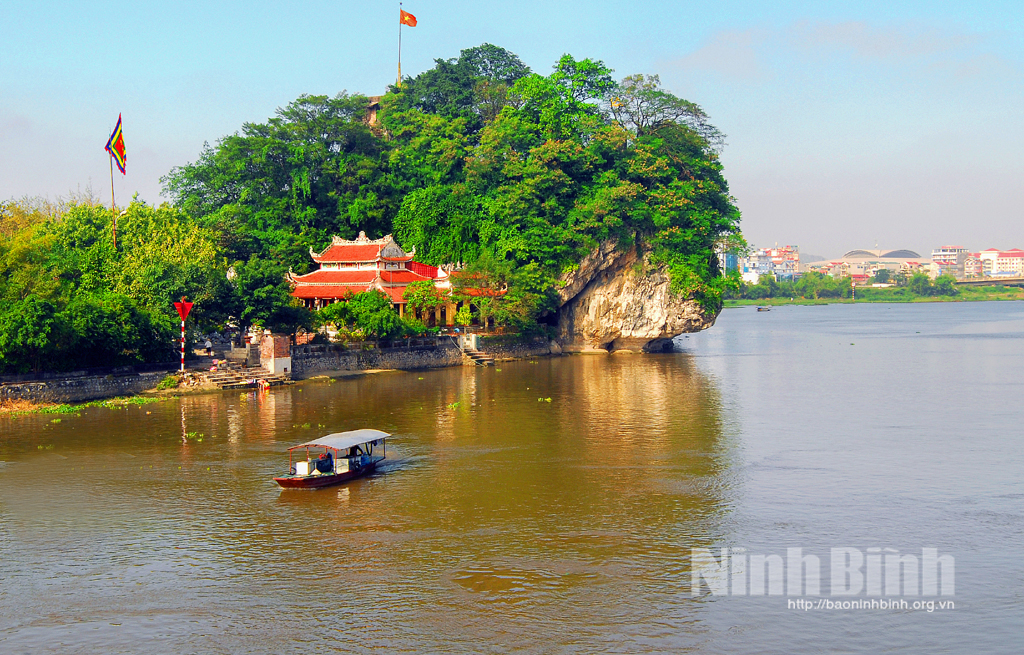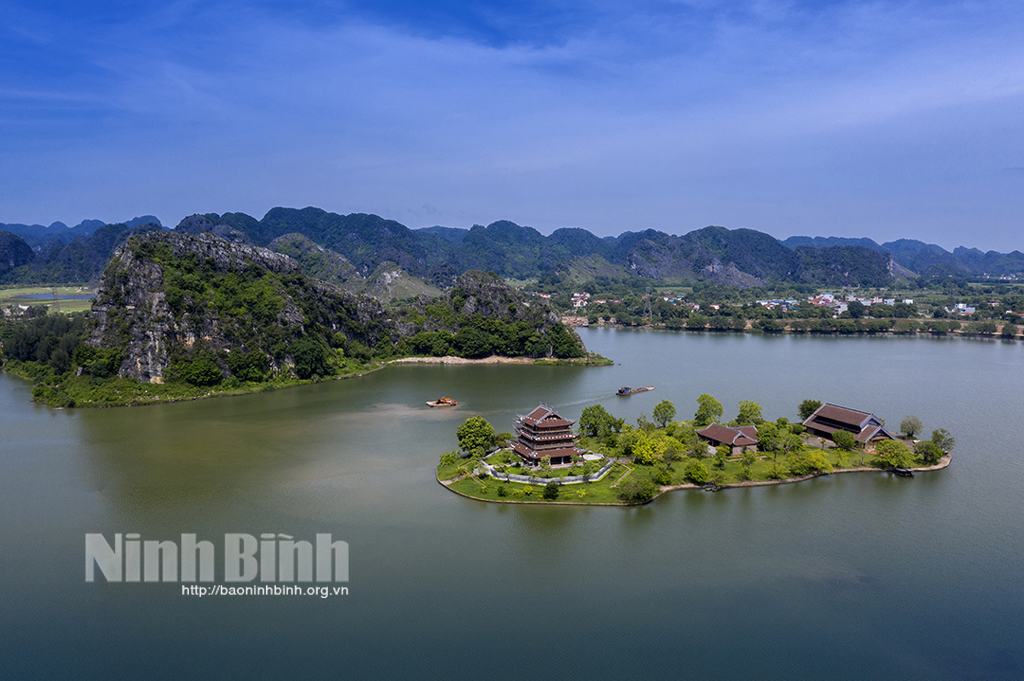Visiting heritage land of Thuy mountain and Van river

First capital of Dai Co Viet feudal state
Hoa Lu ancient capital is among the four core areas of the Trang An Scenic Landscape Complex which was recognised as a world cultural and natural heritage by UNESCO in 2014.
Hoa Lu was considered as the first capital of the feudal state of Dai Co Viet after being ruled by the northern invaders for thousands of years.
It was an alluvial area, situated under the foot of mountains and occupied by prehistoric people for 30,000 years ago.
Numerous remnants of the ancient capital, palaces, citadels, shrines and temple were found there.
Thousand-year-old works such as King Dinh Tien Hoang and King Le Dai Hanh temples; stone pillars in Nhat Tru pagoda, two royal king's beds inside temples worshiping King Dinh Tien Hoang and King Le Dai Hanh at the Hoa Lu ancient capital are decorated with unique stone and wooden carving.
Ninh Binh is seen as a sacred land which is the birthplace of the eminent figures of the nation, including kings and saints such as King Dinh Tien Hoang, King Le Dai Hanh, King Ly Cong Uan and Saint Quy Minh Dai Vuong.
Local architecture buildings, cultural relic sites and beauty spots jointly form a breathtaking nature for Ninh Binh.
The province boasts 1,821 relics, including three special national relic sites and 81 national relics.
In particular, the Trang An Scenic Landscape Complex - the only world cultural and natural heritage in Southeast Asia - is likened to an untouched chronicle book of changes in the geomorphic and landscape environment's evolution as well as the inhabitant of prehistoric people over 30,000 years ago.
Ninh Binh is also boasts numerous intangible cultural values with 225 traditional festivals such as Hoa Lu festival, Trang An festival, Thai Vi temple festival.
It is the cradle of some music folk arts such as Xam singing, Cheo singing, and various traditional craft villages such as Van Lam embroidery, Ninh Van stone carving, Kim Son sedge mat making and Bo Bat pottery.

People and land of Van river and Thuy mountain
Ninh Binh is formed by three rivers, including Day, Hoang and Van rivers. The relic sites of Van River and Thuy mountain have become a symbol of Ninh Binh for many years. Thuy mountain (also called Non Nuoc mountain) was recognised as a special national relic in 2019.
Non Nuoc Mountain was associated with many historical events of the country in different periods.
Under the reign of Dai Co Viet State, Thuy mountain was the outpost of the ancient Hoa Lu citadel.
Chairman of the provincial People's Committee Pham Quang Ngoc said Ninh Binh is proud of being an ancient land where pre-historical people settled down over 30,000 years ago. Before King Ly Cong Uan moved the capital from Hoa Lu to Dai La (now Hanoi capital), Hoa Lu was once a center of politics, culture and economy of Dai Co Viet State.
During 86 years of reigning by the three dynasties of Dinh, Tien Le and Ly, Dai Co Viet State had played an important role in the national history, affirming the national sovereignty as well as providing a solid foundation for following feudal dynasties to develop.
Over 1,000 years have passed, the values of Hoa Lu ancient capital still remain.
In the past few years, the province has promoted the cultural identities of the ancient capital and built a set of behaviours so as to build Ninh Binh into a friendly destination.
Thanks to these efforts, Ninh Binh has been voted as a leading destination in Southeast Asia by international magazines and journals.
The province is striving to develop four-season tourism products in association with preserving and promoting heritages.
In spring, holidaymakers can take part in a wide range of traditional festivals such as Trang An festival, Bai Dinh pagoda festival, Thai Vi temple festival. In summer, tourists can join in Tam Coc-Trang An tourism week.
The tourism sector is planning to plant waterlily flowers in Ngo Dong river of Tam Coc landscape to serve tourists in autumn and winter.
Localities will be guided to build four-season tourism products in an attempt to provide fresh experiences for tourists in the coming time.
Translated by Nguyen Thuy


